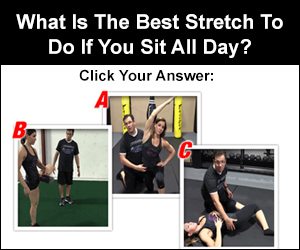CrossFit has gained immense popularity as a high-intensity fitness program that combines elements of weightlifting, cardio, and functional movements. This comprehensive training approach appeals to fitness enthusiasts of all levels, from beginners to seasoned athletes. CrossFit workouts are designed to improve overall fitness, strength, and endurance through varied and challenging exercises performed at high intensity.

For beginners, CrossFit may seem intimidating at first glance. However, the program is scalable and adaptable to individual fitness levels, making it accessible to those just starting their fitness journey. CrossFit gyms, known as “boxes,” offer supportive communities where newcomers can learn proper techniques and gradually build their strength and skills.
Starting CrossFit requires dedication and a willingness to push personal limits. Beginners should focus on mastering fundamental movements, developing proper form, and gradually increasing workout intensity. With consistent effort and guidance from experienced coaches, newcomers can quickly see improvements in their fitness levels and overall well-being.
Key Takeaways
- CrossFit combines weightlifting, cardio, and functional movements for comprehensive fitness
- Beginners can scale workouts to their fitness level and gradually increase intensity
- Proper form, consistent training, and coaching support are essential for CrossFit success
Understanding CrossFit Basics
CrossFit combines functional movements, high-intensity workouts, and varied exercises to improve overall fitness. It emphasizes constantly varied, functional movements performed at high intensity.
Fundamentals of CrossFit
CrossFit focuses on functional movements that mimic real-life activities. These movements include squats, deadlifts, push-ups, and pull-ups. The program emphasizes compound exercises that work multiple muscle groups simultaneously.
CrossFit workouts are designed to be scalable, allowing participants of all fitness levels to participate. Intensity is a key component, with workouts typically lasting 10-30 minutes.
CrossFit aims to improve ten general physical skills: cardiovascular endurance, stamina, strength, flexibility, power, speed, coordination, agility, balance, and accuracy.
CrossFit Terminology
WOD stands for “Workout of the Day,” the daily prescribed workout at CrossFit gyms. AMRAP means “As Many Rounds As Possible” within a set time frame.
“For Time” workouts require completing a specific set of exercises as quickly as possible. RX’d indicates performing a workout as prescribed, without modifications.
Box is the term for a CrossFit gym. MetCon refers to metabolic conditioning workouts that improve cardiovascular fitness and endurance.
Typical CrossFit Workout Structure
CrossFit classes typically begin with a warm-up to prepare the body for exercise. This is followed by a skill or strength component focused on technique and building power.
The main workout, or WOD, is the high-intensity portion of the class. WODs can include a mix of cardio, weightlifting, and bodyweight exercises.
Classes often conclude with a cool-down and stretching session. CrossFit workouts are designed to be varied, challenging different aspects of fitness each day.
Many CrossFit gyms post their WODs online, allowing members to prepare for the day’s workout in advance.
Getting Started with CrossFit
CrossFit can be intimidating for beginners, but with the right approach, it’s accessible to people of all fitness levels. Choosing an appropriate gym, knowing what to expect, and scaling workouts are key to a successful start.
Choosing the Right CrossFit Gym
Look for a CrossFit gym, or “box,” that prioritizes safety and proper form. A good gym will have qualified coaches who focus on technique before intensity. Visit several boxes to find one with a welcoming community and a supportive atmosphere.
Ask about their beginner programs. Many offer foundations courses to teach basic movements. Check the coach-to-athlete ratio during classes. Smaller groups often mean more individual attention.
Consider the gym’s schedule and location. Consistency is crucial, so choose a box that fits your routine. Some gyms offer open gym times, which can be helpful for practicing skills.
What to Expect in Your First Class
Arrive early to meet the coach and discuss any concerns or limitations. The class typically begins with a group warm-up, followed by skill work or strength training. The main workout, or “WOD” (Workout of the Day), comes next.
Coaches will demonstrate movements and offer modifications. Don’t be afraid to ask questions or request help. Remember, everyone starts as a beginner.
Expect a mix of cardio and strength exercises. CrossFit incorporates elements from weightlifting, gymnastics, and endurance training. The workout ends with a cool-down and stretch.
Scaling Workouts for Beginners
Scaling allows newcomers to participate in workouts while building strength and skills. Coaches will suggest modifications based on individual abilities and fitness levels.
This might involve reducing weight, adjusting repetitions, or substituting exercises. For example, pull-ups might be scaled to ring rows for those still developing upper body strength.
As fitness improves, gradually increase intensity and complexity. Set realistic goals and focus on proper form. Consistency and patience are key to progress in CrossFit.
Remember, scaling isn’t just for beginners. Even experienced athletes scale workouts to match their current abilities or to focus on specific skills.
CrossFit Exercises and Techniques
CrossFit incorporates a diverse range of functional movements and training methods. These exercises target multiple muscle groups simultaneously, improving overall fitness and performance.
Core CrossFit Movements
The foundation of CrossFit lies in its core movements. These include squats, deadlifts, push-ups, pull-ups, and Olympic lifts like the clean and jerk. Mastering these exercises is crucial for CrossFit success.
Squats build lower body strength and improve mobility. Deadlifts target the posterior chain, enhancing overall power. Push-ups and pull-ups develop upper body strength and control.
Olympic lifts like the clean and jerk combine strength, power, and coordination. These complex movements require practice but offer significant fitness benefits.
CrossFit also incorporates gymnastics movements such as handstands and muscle-ups. These exercises improve body awareness and control.
Perfecting Form and Technique
Proper form is essential in CrossFit to maximize results and prevent injuries. Each movement has specific technical requirements that must be learned and practiced.
For barbell exercises, maintaining a neutral spine and engaging the core are crucial. In Olympic lifts, focus on explosive hip extension and proper bar path.
Pull-ups require a strong grip and controlled movement. Kipping pull-ups, a CrossFit variation, involve a swinging motion to generate momentum.
CrossFit coaches emphasize technique over speed or weight. Beginners should focus on mastering form before increasing intensity or load.
Video analysis and peer feedback can help identify and correct form issues. Regular practice and attention to detail lead to improved technique over time.
Strength Training and Conditioning
CrossFit combines strength training with metabolic conditioning for well-rounded fitness. Strength workouts often involve heavy lifts with low repetitions.
Common strength exercises include back squats, bench press, and overhead press. These movements build raw power and muscle mass.
Conditioning workouts, known as “metcons,” improve cardiovascular endurance and stamina. They often combine multiple exercises performed at high intensity.
Kettlebell swings and box jumps are popular conditioning exercises. These movements elevate heart rate while building power and explosiveness.
CrossFit programming typically alternates between strength-focused days and conditioning workouts. This balanced approach promotes overall fitness and prevents plateaus.
Safety and Injury Prevention in CrossFit

CrossFit can be an intense workout regimen that requires proper preparation and caution. Prioritizing safety and injury prevention is crucial for long-term success and enjoyment of the program.
Understanding Your Fitness Level and Limits
Beginners should start slowly and gradually increase intensity. A thorough assessment of current fitness levels helps set realistic goals and prevents overexertion. Proper form is essential for all exercises to minimize the risk of injuries.
Coaches play a vital role in ensuring safety. They provide guidance on technique and help modify workouts to suit individual needs. Listening to your body is key – if something doesn’t feel right, stop and seek advice.
Flexibility and mobility exercises are important components of injury prevention. Regular stretching and warm-up routines prepare the body for intense workouts. Balance and coordination drills can also improve overall performance and reduce the risk of accidents.
Importance of Rest and Recovery
Rest days are crucial for muscle repair and growth. Overtraining can lead to fatigue, decreased performance, and increased injury risk. Aim for at least one or two rest days per week.
Proper sleep and nutrition support recovery. Aim for 7-9 hours of sleep nightly and maintain a balanced diet rich in protein, complex carbohydrates, and healthy fats.
Active recovery, such as light cardio or yoga, can help maintain flexibility and reduce muscle soreness. Massage and foam rolling can also aid in muscle recovery and prevent tightness.
Listening to your body is essential. If you experience persistent pain or discomfort, take additional rest days or consult a healthcare professional.
Developing Your CrossFit Plan
Creating a successful CrossFit plan involves setting goals, adjusting nutrition, and adapting to long-term training. A well-structured approach helps beginners progress safely and effectively in their CrossFit journey.
Setting Achievable and Progressive Goals
Start by assessing your current fitness level. This forms the baseline for setting realistic short-term and long-term goals. Focus on specific, measurable objectives like improving workout times or increasing weights lifted.
Break larger goals into smaller milestones. This allows for regular progress checks and motivation boosts. Consider tracking performance metrics in a journal or app to monitor improvement over time.
Incorporate a mix of strength, endurance, and skill-based goals. This balanced approach ensures well-rounded development in CrossFit’s varied disciplines. Regularly reassess and adjust goals as fitness improves to maintain challenge and motivation.
CrossFit Nutrition and Lifestyle
Proper nutrition fuels CrossFit performance and recovery. Focus on a balanced diet with adequate protein, complex carbohydrates, and healthy fats. Tailor calorie intake to activity level and body composition goals.
Meal timing is crucial. Eat a balanced meal 2-3 hours before workouts and consume protein and carbs within 30 minutes post-workout for optimal recovery. Stay hydrated throughout the day, especially before, during, and after training sessions.
Consider lifestyle factors that impact performance. Prioritize 7-9 hours of quality sleep nightly for recovery and hormone balance. Manage stress through techniques like meditation or yoga to complement CrossFit training.
Adapting to Long-Term Training
Consistency is key in CrossFit. Aim for 3-5 workouts per week, allowing for rest and recovery days. Listen to your body and adjust training intensity as needed to prevent burnout or injury.
Incorporate periodization into your training plan. This involves cycling through different training phases to optimize performance and prevent plateaus. Focus on building a solid foundation of strength and skills before tackling more advanced movements.
Stay engaged with the CrossFit community. Participate in group classes, find a training partner, or join online forums for support and motivation. Regularly reassess your training philosophy and goals to ensure continued alignment with your evolving fitness journey.
Beyond the Basics: Advancing in CrossFit
As athletes progress in CrossFit, they encounter increased physical demands and opportunities for growth. Advancing requires careful attention to intensity, load management, and involvement in the broader CrossFit community.
Understanding Increasing Intensity and Load
CrossFit’s foundational principle of constantly varied functional movements performed at high intensity becomes more pronounced as athletes advance. Workouts gradually incorporate heavier weights and more complex movements. Athletes focus on improving their strength, endurance, and skill simultaneously.
Proper form remains crucial when increasing load. Coaches often introduce Olympic weightlifting techniques and advanced gymnastics movements. These skills require patience and consistent practice to master.
Progressive overload is key to advancement. Athletes gradually increase weight, reps, or time domains in their workouts. This controlled escalation helps prevent injuries while promoting continuous improvement.
Joining the CrossFit Community and Competitions
The CrossFit community plays a vital role in athlete development. Local CrossFit boxes often host in-house competitions, allowing members to test their skills in a supportive environment. These events foster camaraderie and push athletes to new levels of performance.
For those seeking greater challenges, the CrossFit Open provides a global platform to compete. This annual event serves as a qualifier for the CrossFit Games, the sport’s pinnacle competition.
Participating in competitions helps athletes identify strengths and weaknesses. It also exposes them to a wider range of movements and workout styles, further enhancing their overall fitness.
Many CrossFit athletes find that community involvement accelerates their progress. Group classes, partner workouts, and team competitions create a motivating atmosphere that encourages personal growth and shared achievements.

